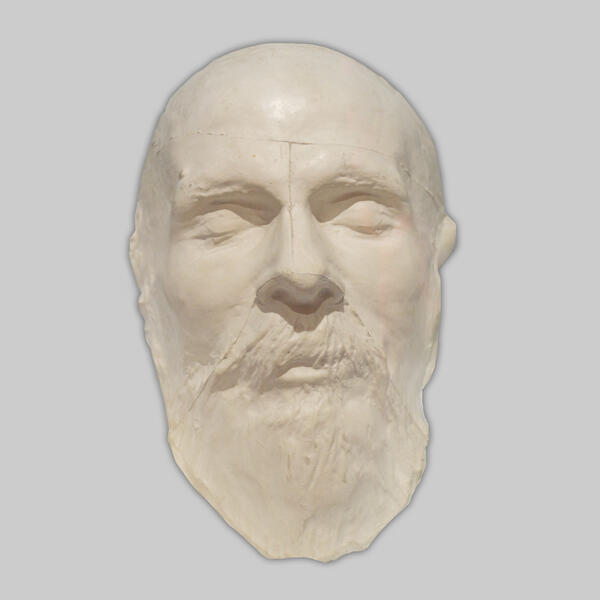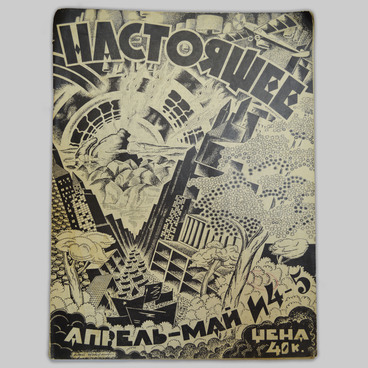Fyodor Dostoevsky died of a lung hemorrhage at the age of 59 on January 28, 1881. Having just completed working on the first part of The Brothers KaramAzov, the writer had plenty of ideas and plans. “It”s only the beginning”, Dostoevsky wrote 50 days before his death. Sadly, life had other plans.
The white-plaster death mask of Dostoevsky was printed from the original one created by sculptor Léopold Bernhard Bernstamm.
The famous Russian portrait sculptor Léopold Bernstamm (1859–1939) planned to shape a bust of Dostoevsky during the writer’s lifetime. Writer DmItry Grigorovich, Dostoevsky’s friend, asked him for his consent to this in his letter dated November 6, 1880, as well as in his letter to Anna Grigorievna dated January 20, 1881.
The writer’s second wife Anna DostoEvskaya wrote in ‘Reminiscences, ” “I forgot to mention the next day after the death of my husband we were visited, among others, by prominent artist Ivan Kramskoi. He showed a willingness to paint a life-size portrait of the deceased and completed his work with tremendous talent. In the portrait, Fyodor Mikhailovich looks asleep, rather than dead. His lightened face nearly smiles as if he has just discovered the truth of the afterlife that he alone is now aware of. Apart from Ivan Kramskoi, there were other artists, and photographers who painted or shot portraits of the deceased for illustrated publications. We were visited by Léopold Bernstamm, unknown at the time. He cast the death mask of my husband”s face. Thanks to that mask, he managed to shape Fyodor Mikhailovich”s bust which looked just like him”.
Quote from the book Léopold Bernstamm. His Life and His Works by Sergey Bernstamm, “It was 1881. Bernstamm was preparing to visit the author of Crime and Punishment. And the appointment has already been made. And then someone rang the doorbell. <…> It was Grigorovich who came to announce the death of a great personality. Bernstamm was struck <…> Bernstamm shaped Dostoevsky”s death mask which later helped him create the bust which looked so much like the deceased. The bust was praised by writer Burenin in Novoye Vremya, Russia”s most significant institution at the time. The young sculptor”s work was well accepted by everyone <…> Pavel Tretyakov bought a bronze copy of the bust which brought Bernstamm the Big Gold Medal of the Imperial Academy of Arts’.



